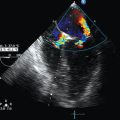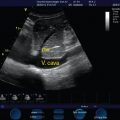Integrating picture archiving and communication systems and computerized provider order entry into the intensive care unit: The challenge of delivering health information technology–enabled innovation
Overview
This chapter presents research evidence on the effective utilization of picture archiving communication systems (PACSs) and computerized provider order entry (CPOE) systems in the intensive care unit (ICU). PACSs provide a centralized communication repository for all imaging data that replaces previous film-based systems by delivering diagnostic images electronically to clinicians. CPOE systems allow clinicians to place orders (e.g., medication, imaging, and pathology) directly into computers with the potential to link to databases containing patient-specific clinical information and decision support software.1 Both CPOE systems and PACSs can be seen as complementary components of an integrated health information technology (IT) infrastructure. They are key building blocks for the hospital electronic medical record that help improve communication between hospital units (e.g., clinical wards, radiology, pathology, and pharmacy), and they contribute to enhanced evidence-based decision-making and quality of patient care.
In the last 30 years PACSs have evolved from in-house radiology systems to fully fledged commercial systems that can network across the hospital and beyond. Their integration with radiology information systems and CPOE and incorporation of technologies such as voice recognition and computer-aided diagnosis are part of the move toward paperless systems. The uptake of PACSs has continued to rise. In the United States, 76% of hospitals reported using PACSs in 2008,2 and at the time of writing, England and Scotland are expected to complete a national rollout of a PACS by the end of 2012.3 Although CPOE has been in existence since the early 1970s, its uptake is considerably less than PACS. A 2009 report examining CPOE implementation estimated that 15% of U.S. hospitals and only a handful of sites in Australia (predominantly in Sydney) had installed CPOE systems.4
There have been optimistic predictions about the potential for health IT to have a positive impact on the quality and effectiveness of patient care. Systematic reviews, however, continue to highlight the complex, variable, and fragmented nature of the evidence for health IT and its effect on patient care outcomes.5,6 A survey of users’ experience undertaken in seven trusts in the United Kingdom by Tan and Lewis7 found that although the majority of respondents could point to the benefits of PACSs, there were also a number of concerns related to the lack of training, system unreliability, and poor quality of images and monitors. We also note that very little research attention has been paid to the effect of PACSs on ICU clinical work processes.8
Impact of health information technology on work practices in the intensive care unit
A systematic review by Hains et al8 investigated the effect of PACSs on clinical work practices in the ICU. The review identified five key performance indicators from 11 studies conducted in either the United States (N = 9) or the United Kingdom (N = 2). The reported indicators included (1) time until an image is available, (2) time that it was accessed, (3) time that it was reviewed, (4) time that a decision is made, and (5) indicators of the frequency and types of communication that are undertaken between ICU clinicians and the medical imaging department.8
Studies of the availability of images generally revealed that PACSs are associated with quicker access to images.8 Watkins et al9 examined routine and nonroutine chest examinations in a before and after study and reported an improvement in examination accessibility of up to 30 minutes for routine examinations but no difference for nonroutine images. These results are mirrored in a survey of ICU staff by Cox and Dawe10 in which it was shown that 90% of users believed that images were available sooner than before the introduction of a PACS and 72% perceived that there were no longer problems related to lost images. The improved availability of images is complemented by decreases in the time taken for an ICU physician to review images. One study by Humphrey et al11 showed that the mean time from image exposure to image viewing was 39 minutes in a surgical ICU with a PACS versus 78 minutes in a medical ICU without a PACS.11 Changes in viewing patterns were also highlighted by De Simone et al,12 who found that physicians incorporated the viewing of electronic images into their morning ward rounds as part of their routine. This replaced the practice before implementation of a PACS in which the majority of films were viewed as part of the daily radiologist conference in the ICU at 3:00 pm. This was associated with reduced time to reach clinical decisions.12 These findings correspond to surveys reported in separate studies by Cox and Dawe10 and Humphrey et al11 in which it was shown that the majority of clinicians perceived that PACSs led to quicker decision-making.
In contrast to the positive findings of the effect of PACSs on efficiency and timeliness, the prevailing evidence about the impact of PACSs on communication patterns within the ICU and across hospitals is variable, with studies showing no difference in the frequency of communication between ICU physicians and the radiology department13 or significant reductions in the input received (via telephone, direct contact, or reports) from radiologists.14
Decision support systems
One of the most important potential benefits of health IT relates to the incorporation of decision support systems (DSSs), which can provide on-screen reminders and prompts to enhance adherence to evidence-based guidelines. This can lead to a reduction in the number of low-yield requests, which constitutes an ineffective use of resources and poor risk-benefit return. A systematic review by Georgiou et al6 published in 2011 identified 14 studies that investigated the impact of CPOE systems on medical imaging services. The studies were either preintervention-postintervention comparisons (n = 10) or time-series studies (n = 4). Seven of the studies assessed the effect of decision support features that prompted the use of guidelines. These studies generally reported increased adherence to guidelines that led to reductions in unnecessary or low-yield orders. They included a study by Chin and Wallace,15 which reported an improvement in the percentage of upper gastrointestinal imaging requests conforming to guidelines (from 56% to 86%—significance not stated) after implementation of a CPOE system with guidelines embedded in the ordering process. A time-series study by Carton et al16 used a CPOE system to provide on-screen reminders displaying recommendations and alerting physicians if a request did not conform to the guidelines. This intervention led to a significant decrease in the percentage of radiology orders that did not conform to the guidelines (from 33.2% to 26.9%; P = .0001).16 Sanders and Miller17 used a similar decision support feature as Carton et al16 and reported that the examination recommended by the guidelines was chosen in 60% of cases (P = .001). Participants in this study were also required to give a reason for overriding the recommended practice. Reasons for nonconformance included a patient-specific context (79%), influence or verbal order by another person (15%), and the recommended examination already performed (15%).17
Evidence on the implementation and utilization of DSSs continues to be inconsistent.5 This reflects the inherent difficulties involved in the design of effective DSSs. The success or otherwise of DSSs relies on a number of factors, including its usability, perceived relevance, and even just the way that it is presented to clinicians. Implementation of a DSS is a key organizational and communication challenge whose success is contingent on the way that clinical work is carried out across multiple clinical and patient settings.6
Cases: Sociotechnical approaches to health information technology–enabled innovation in the intensive care unit
Sociotechnical research perspectives draw attention to the interface between the technical features of health IT and the particular social, human, and ergonomic context in which they operate.18 To illustrate the contribution that such research approaches can make in understanding the effective utilization of health IT, we highlight three qualitative studies undertaken in ICUs in Sydney, Australia. The studies reported on (1) ward round practices associated with the introduction of PACSs, (2) the impact of PACSs on nursing work practices, and (3) ICU clinicians’ perceptions of the impact of health IT on clinical decision-making.
A 2011 study by Hains et al19 reported on ward round work practice associated with PACSs in the ICU. The study was based on 79 hours of observation of ward rounds and 40 one-on-one semistructured interviews with ICU physicians (staff specialists, registrars, and residents) in three hospitals with different levels of PACS and health IT availability. The results of the study showed that physicians viewed imaging results infrequently during ward rounds in two of the ICU settings—one without a PACS and one with a PACS accessible via bedside computer. In the third ICU, in which a PACS was available only through a central workstation, regular viewing of images throughout the daily ward round was perceived by clinicians to contribute to decisions about patient care.19 The study concluded that the availability of PACSs on bedside computers did not automatically lead to integration into ward round discussions and decision-making. The authors outlined possible factors that could have influenced this finding, including computer screen resolution and specific contextual factors (ranging from the particular makeup, size, and location of the site to patient intake) that may be unique to each of the settings.19
A second study by Creswick et al20 interviewed 49 nurses and observed nurse practices for 35 hours in the same three ICUs studied by Hains et al.19 The study found that access to PACSs was associated with nurses having easier and timelier access to images. This was perceived by nurses to have a positive impact on patient safety while also eliminating the need to constantly search for films. In contrast, in the hospital without a PACS, nurses had limited access to images and were able to view them only during the ward round.20
A third unpublished study undertaken in four metropolitan ICUs involved 56 semistructured interviews and 133 hours of observations of ward rounds and associated meetings to compare ICUs with varying health IT levels: CPOE systems (sites 1 to 4), beside computers (site 1), and PACSs (sites 1 to 3). Findings from this study showed that overall, physicians believe that health IT improves the availability and accessibility of information. They perceived this to have a positive impact on clinical decision-making. In sites that still used some form of paper records, it was frequently observed that different parts of the record were accessed simultaneously, for instance, one physician writing in the progress notes while another reviewed the medication chart. Senior clinicians at sites without bedside computers reported that it adversely affected their work because they were required to make frequent trips to a central workstation to access images and results. Concern was also expressed about how the location of health IT can have an impact on work practices. Participants noted that workstation computers affected the time that physicians actually spent with patients at the bedside. The study identified the importance of considering work environments and work practices in understanding how health IT systems are used and integrated (or not integrated) into everyday practice.
Conclusion
The ICU is a data-intensive environment in which clinicians require easy access to information for time-critical clinical care decisions. PACSs and CPOE/DSSs are powerful technologies that fundamentally change the way that data, information, and knowledge are recorded, stored, accessed, and communicated between the ward, the imaging department, and the hospital. They have the potential to facilitate seamless exchange of information across all aspects of the patient care process.21 This potential should not, however, divert attention from the challenges that come with the introduction of health IT. Technology-enabled innovation in critical care settings needs to be accompanied by agreement between diverse professional groups to ensure that the systems are easy to use, are conducive to team work practices, and contribute positively to the quality and safety of care.22 Finally, the recent integration of ultrasound technology into many ICUs around the world is gradually changing critical care management logistics. Implementation of ultrasound in routine ICU practice may result in the development of ICUs with their own “imaging” capabilities. This will presumably enhance the utilization of PACSs and CPOE/DSSs by intensivists in the future (see Chapter 57).
Pearls and highlights
• PACSs and CPOE systems can be seen as complementary components of an integrated health IT infrastructure for enhancing the provision of quality and safe patient care.
• Research evidence has identified the effect of PACSs on ICU clinical work practices, particularly with respect to the efficiency of work practices, clinical decision-making, and communication practices within the ICU and across the hospital.
• One of the most important potential benefits of health IT involves the incorporation of electronic decision support as an aid in the medical decision-making process. Research evidence has shown that when linked to CPOE systems, DSSs can increase adherence to evidence-based guidelines and lead to reductions in unnecessary and low-yield testing.
• Sociotechnical research perspectives highlight the importance of the interface between technical and human and social factors, along with the particular context in which they operate. Technology-enabled innovation in critical care settings needs to be accompanied by rigorous attention to the implementation, usability, and sustainability of health IT systems to ensure that they contribute positively to the quality and safety of care.
References
1. Birkmeyer, CM, Lee, J, Bates, DW, Birkmeyer, JD. Will electronic order entry reduce health care costs. Effective Clin Pract. 2002; 5(2):67–74.
2. Dorenfest Institute for Health Information, Picture archiving and communication systems: a 2000. 2008 study. HIMSS Foundation, Chicago, 2010.
3. Sutton, LN. PACS and diagnostic imaging service delivery—a UK perspective. Eur J Radiol. 2011; 78(2):243–249.
4. Aarts, J, Koppel, R, Implementation of computerized physician order entry in seven countries. Health Affairs (Millwood). 2009;28(2):404–414.
5. Black, A, Car, J, Pagliari, C, et al, The Impact of eHealth on the quality and safety of health care: a systematic overview. PLoS Med. 2011;8(1) [e1000387].
6. Georgiou, A, Prgomet, M, Markewycz, A, et al, The impact of computerized provider order entry systems on medical imaging services: a systematic review. J Am Med Inform Asso. 2011; 18:335–840.
7. Tan, SL, Lewis, RA, Picture archiving and communication systems: a multicentre survey of users experience and satisfaction. Eur J Radiol. 2010;75(3):406–410.
8. Hains, I, Georgiou, A, Westbrook, J, The impact of PACS on clinician work practices in the intensive care unit: a systematic review of the literature. J Am Med Inform Assoc. 2012;19(4):506–513.
9. Watkins, J, Weatherburn, G, Bryan, S. The impact of a picture archiving and communication system (PACS) upon an intensive care unit. Eur J Radiol. 2000; 34(1):3–8.
10. Cox, B, Dawe, N. Evaluation of the impact of a PACS system on an intensive care unit. J Manag Med. 2002; 16(2/3):199–205.
11. Humphrey, LM, Fitzpatrick, K, Atallah, N, Ravin, CE. Time comparison of intensive care units with and without digital viewing systems. J Digit Imaging. 1993; 6(1):37–41.
12. De Simone, D, Kundel, H, Arenson, R, et al. Effect of a digital imaging network on physician behavior in an intensive care unit. Radiology. 1988; 169(1):41–44.
13. Andriole, KP, Storto, ML, Gamsu, G, Huang, H. Impact and utilization studies of a PACS display station in an ICU setting. Proc SPIE. 1996; 2711:286–289.
14. Kundel, HL, Seshadri, SB, Langlotz, CP, et al, Prospective study of a PACS: information flow and clinical action in a medical intensive care unit. Radiology. 1996;199(1):143–149.
15. Chin, HL, Wallace, P, Embedding guidelines into direct physician order entry: simple methods, powerful results. Proc AIMA Sym. 1999; 221–225.
16. Carton, M, Auvert, B, Guerini, H, et al. Assessment of radiological referral practice and effect of computer-based guidelines on radiological requests in two emergency departments. Clin Radiol. 2002; 57(2):123–128.
17. Sanders, D, Miller, R. The effects on clinician ordering patterns of a computerized decision support system for neuroradiology imaging studies. Proc AIMA Symp. 2001; 583–587.
18. Whetton, S, Georgiou, A. Conceptual challenges for advancing the socio-technical underpinnings of health informatics. Open Med Inform J. 2010; 4:221–234.
19. Hains, IM, Creswick, N, Westbrook, JI. Does PACS facilitate work practice innovation in the intensive care unit. Stud Health Technol Inform. 2011; 169:397–401.
20. Creswick, N, Hains, IM, Westbrook, JI. Innovation in intensive care nursing work practices with PACS. Stud Health Technol Inform. 2011; 169:402–406.
21. Khorasani, R, Computerized physician order entry and decision support: improving the quality of care. Radiographics. 2001;21(4):1015–1018.
22. Committee on Patient Safety and Health Information Technology, Institute of Medicine, Health IT and patient safety: building safer systems for better care. National Academies Press, Washington, DC, 2011.







